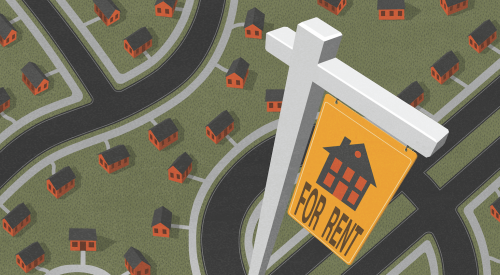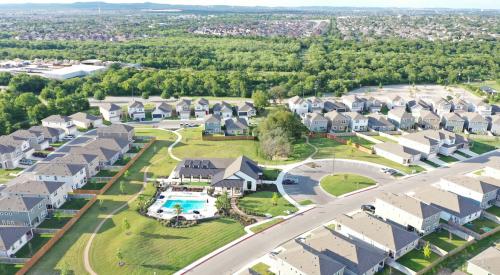The home building industry has historically benefited from advancements in building materials, technological innovation, long-term mortgage financing, and government support. If you dropped someone from the 1920s into a new home today, they’d be shocked at central heating and air conditioning, microwave ovens, lights that turn on the moment the sun sets, and a host of other features we now take for granted.
But one thing that certainly hasn't changed is that home builders need land to sustain their businesses. But when it comes to land inventory strategies, most builders seem reluctant to rely on a “just-in-time” model to acquire land as needed for immediate construction. The fact is, many home builders still own too much land on their balance sheets, a risk heightened by the current health crisis.
Just-in-time business models have proven highly effective for U.S. automakers, aviation companies, and other manufacturers. Now, with careful planning, a similar approach can be used to improve cash flow for home builders through intelligent use of capital.
RELATED
- Land of Opportunity: How Home Builders Can Get Creative in 2020
- Don't Pay Too Much for Land
- Lots, Land, and Opportunity: Post-recession, builders are finding there’s more than one way to the land and lot pipeline
In the Real World
Certainly, publicly traded home builders have pivoted to land-light business models that allow them to forgo owning years’ worth of land inventory. This strategy is most likely driven by current equity shareholders more so than a genuine desire to own less land; after all, wouldn’t the appreciation of land purchased five years ago be conducive to higher margins today? In fact, that question is not easy to answer.
A builder’s land cost basis can significantly increase over time, especially if they are developing it themselves. The cost of owning land can add up quickly over a three-to-five-year period if you take into account interest rate payments, property taxes, insurance, maintenance, and other expenses, which erode its profitability.
But what happens during an industry slowdown? That same land can represent six to eight years of unnecessary and unfinished inventory with a cost basis that constantly increases. Also, owning land usually requires the builder to utilize debt capital, which reduces operating cash and can constrain a builder’s ability to invest in new communities in desired markets, all while increasing risks to investors.
Reducing Land Risk
As a land investor and developer of master planned communities, BTI Partners has been supplying ready-to-build land to local, regional, and national home builders since the Great Recession more than a decade ago.
Back then, builders did all they could to stay in business, often selling or losing control of land they didn’t have the means to retain. The current health crisis is giving way to a similar scenario and once again exposing the risks of owning too much land inventory.
Without a COVID-19 vaccine and increasing uncertainty about when the overall economy will fully reopen, we expect to see a growing number of builders implementing “just-in-time” land deals to minimize their inventories of raw and entitled land—in part because Wall Street views home builders as manufacturers and wants to see their working capital applied to development and construction operations.
How (and Why) It Works
Despite the pandemic, land prices will continue to rise throughout the U.S., and tracts suitable for affordable single-family projects priced in the $250,000 to $400,000 range are still the sweet spot of today’s market.
By partnering with a company like BTI Partners, production builders are not only able to unload their inventories now, but to also acquire suitable and ready-to-build land for their next projects as the economy reopens.
Unlike built-out urban areas where land is at a premium, where tear-downs and vertical construction may be the only options for builders, land costs in suburban or exurban locations allow builders to maintain their focus on single-family or low- to mid-rise multifamily strategies.
In Florida, for example, there are still large tracts of relatively inexpensive land in the Orlando, Tampa Bay, and Jacksonville markets suitable for residential development. Last year BTI Partners acquired 1,400 acres outside Orlando and is currently securing entitlements to develop a master planned community for 5,000 residential dwellings.
Along with lower land prices, labor costs in these markets also tend to be lower than in metro areas, adding to their financial appeal for builders and developers.
However, it takes careful market research to find a 500-to-5,000-acre parcel in a new exurban location that will attract buyers or renters in the future. Not all metro locations are equal when it comes to potential population, job, and income growth, the key drivers of demand for new for-sale homes and rental units.
By teaming up with a firm that specializes in land banking and the long and expensive planning, entitlement, and approval process needed to turn raw land into a new community, builders can address the challenges they are currently facing amid COVID-19 and other factors affecting the residential development and building industry.
 Justin Onorato is CIO of BTI Partners, in Fort Lauderdale, Fla.
Justin Onorato is CIO of BTI Partners, in Fort Lauderdale, Fla.













